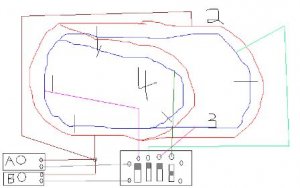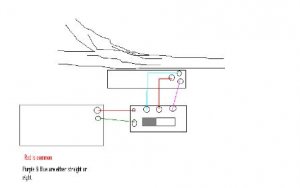Hey, ive always played with trains for a long time and now I want to start making them into models. I already have a 4x8 in the garage from a while back. I found a cool layout that I like at the following link:
http://www.thortrains.net/marx/funlayez1.html

There we go, I dont think this is TOO complex for me, but I dont know,
I am HO gage and if I read correctly this would fit on 4x8 just barely.
I need some help understanding a few things such as using different engines and wiring. I am 18 years old and know nothing of wiring. What are some good tips, books, etc...
This is going to be 100% level and no mountains or huge scenery, I dont even know how to do that yet lol... I am probably going to use some cheap grass stuff and what not...
I know this will be a channelge for me to get wiring done but Ive already done stuff with 1 engine on 1 track, now I want to try and go further.
I also have one quick question. How many power sources do you use? (the power boxes i mean), do you use one for each track section that has a different power source? im kinda of confused about that.
Sorry everything is scattered about, im just putting down my thoughts. I hope you can understand what I have written. Thanks guys for helping me. Any ideas?
~Kenny
http://www.thortrains.net/marx/funlayez1.html

There we go, I dont think this is TOO complex for me, but I dont know,
I am HO gage and if I read correctly this would fit on 4x8 just barely.
I need some help understanding a few things such as using different engines and wiring. I am 18 years old and know nothing of wiring. What are some good tips, books, etc...
This is going to be 100% level and no mountains or huge scenery, I dont even know how to do that yet lol... I am probably going to use some cheap grass stuff and what not...
I know this will be a channelge for me to get wiring done but Ive already done stuff with 1 engine on 1 track, now I want to try and go further.
I also have one quick question. How many power sources do you use? (the power boxes i mean), do you use one for each track section that has a different power source? im kinda of confused about that.
Sorry everything is scattered about, im just putting down my thoughts. I hope you can understand what I have written. Thanks guys for helping me. Any ideas?
~Kenny



